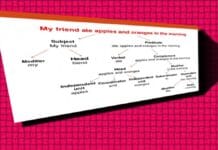Introducing oneself is integral to communication, setting the foundation for every personal and professional interaction. Whether it’s a casual meeting, a formal business introduction, or even online engagement, how we present ourselves profoundly impacts how others perceive us. A well-crafted introduction goes beyond mere formalities, allowing individuals to create meaningful connections, establish trust, and open doors to future opportunities.
Importance of Introducing Oneself
Introducing oneself serves as the starting point for interactions, allowing both parties to engage meaningfully. A well-executed introduction can help convey openness, confidence, and clarity, which are key for establishing rapport.
Essential for Effective Communication
An introduction is often the first step in effective communication. It helps break the ice, establishes rapport, and lays the groundwork for further dialogue. When you introduce yourself clearly, confidently, and engagingly, you immediately set a positive tone for the interaction. Effective communication ensures that the message is sent and received clearly, and a good introduction plays a pivotal role in ensuring that the conversation flows smoothly from the outset.
A proper introduction helps avoid misunderstandings. By clearly stating who you are and why you are part of the conversation, you provide context that guides the other person in how they should engage with you. This is particularly important in professional environments, where roles, expectations, and relationships must be established early.
Shapes Others’ Initial Perceptions
First impressions are often formed within the first few seconds of meeting someone, and your introduction plays a crucial role in this process. The way you introduce yourself influences how others perceive your personality, competence, and confidence. A robust and positive introduction can leave others with a lasting impression of your professionalism and charisma. In contrast, a weak introduction can leave others uncertain or unimpressed.
For example, in a business setting, a clear and confident introduction sets the tone for a professional relationship. The other party gains insight into your level of preparedness, self-assurance, and the value you bring to the table. In contrast, a casual introduction at a social gathering shapes how approachable, friendly, and open you appear. In both cases, your introduction establishes the tone and direction for all future interactions.
Share Information About Your Identity
An introduction provides others with a snapshot of who you are. It shares essential information about your identity, background, and interests, which can help others understand you better. In many cases, it is not enough to simply state your name. Offering context about your role, profession, or interests can make your introduction more engaging and informative.
For example, in a networking event, simply saying, “I’m Arun”, is less impactful than saying, “I’m Arun Thampy, a digital marketing strategist with a passion for helping small businesses grow online.” By sharing a bit of your background or interests, you create a point of connection for others to engage with you more meaningfully. It opens up opportunities for common ground, shared interests, or potential collaboration, giving others a reason to remember and interact with you beyond the introduction.
A Glimpse into Who You Are and What You Value
Introducing yourself is about more than just saying your name —it’s an opportunity to provide a glimpse into your values, personality, and what motivates you. When crafted thoughtfully, an introduction reflects your background, worldview, and priorities. For example, if you’re passionate about environmental sustainability, subtly integrating this into your introduction can signal to others what you stand for and what you are passionate about. This helps set the tone for a more authentic and meaningful exchange, where others can get a sense of the person behind the name.
In professional contexts, a self-introduction might include information about what drives you in your career or your professional goals. In a more casual or social context, you might focus on sharing hobbies, interests, or personal experiences that highlight what is important to you at that moment. This additional context can foster deeper conversations, spark curiosity, and leave others wanting to learn more about you.
Fruitful Short-Term Interactions and Lasting Relationships
A well-thought-out introduction has the potential to create both short-term and long-term benefits. In the short term, a good introduction can make a conversation more enjoyable and productive. Whether you’re networking, meeting a potential client, or simply making new acquaintances, the way you introduce yourself can determine the trajectory of that interaction. A positive, engaging introduction can make people more interested in what you have to say and more inclined to continue the conversation.
In the long term, effective introductions can be the foundation of lasting relationships. People remember those who make a solid first impression; a great introduction can serve as the entry point for future collaborations, partnerships, or friendships. Especially in professional or business environments, your initial introduction could lead to opportunities that extend well beyond the moment, influencing your career trajectory or personal development. Moreover, a memorable and impactful introduction can result in people talking about you positively to others, expanding your network through word-of-mouth.
Introducing Oneself in a Conversation
Introducing oneself in a conversation is crucial to building connections, whether in personal, social, or professional environments. A well-structured self-introduction helps create a smooth entry into a dialogue, setting the tone for meaningful and productive interactions.
Start with a Greeting
The first step in any self-introduction is to start with a polite greeting. This sets a friendly, approachable tone for the conversation and signals respect to the other person. The type of greeting depends on the context and the formality of the interaction.
A simple, informal greeting like “Hi,” “Hello,“ or “Hey“ can be appropriate when meeting someone in a casual or social setting. This keeps things light and approachable.
In more formal environments, such as business meetings or professional settings, a more formal greeting like “Good morning,“ “Good afternoon,“ or “Good evening“ is preferable. This shows professionalism and respect for the occasion. A warm greeting opens the door for engagement and signals you are ready to communicate.
State Your Name
After greeting, clearly stating your name is the next essential step. Introducing your name helps to personalise the interaction and allows the other person to address you appropriately. The way you say your name can also impact how others perceive your confidence and openness.
When stating your name, do so clearly and confidently. For example, “My name is Amal Krishna.“ A firm delivery prevents confusion and ensures the listener can remember your name.
In some cases, depending on the situation, you may add a little more context with your name. For example, “Hi, I’m Farzana Parveen, the project coordinator for this event.“ This adds professionalism and gives others immediate context for your role or presence in the conversation.
In a casual setting, simply stating your first name may be enough, such as “Hi, I’m Farzana.“ In professional settings, including your full name or title can lend more formality.
Provide Context
Providing context is the step that gives others insight into why you are engaging in the conversation. It helps the other person understand your role or purpose for being in the current environment and ensures that the interaction is relevant.
In informal settings, the context might be lighter. For example, if you’re meeting someone at a party, you might say, “Hi, I’m Saranya. I’m a friend of Malavika; we went to college together.“ This provides some context about how you’re connected to the event and invites further conversation.
In more formal or professional environments, context can be related to your role or goals. For example, “Hi, I’m Mohammed Althaz, and I work as a financial analyst with Sharekhan. I’m here to learn more about the new market trends we’ve been hearing about.“ This gives the other party a clear sense of your purpose and area of interest, guiding the direction of the conversation.
Providing context also helps the other person frame their responses appropriately and can lead to more focused and meaningful discussions.
Share Relevant Information
After stating your name and providing context, sharing relevant information is the step that makes your introduction more engaging and personal. This is where you provide insight into your background, expertise, or interests —information directly connected to the conversation.
In a social setting, relevant information can be about your hobbies, interests, or what brought you to the event. For instance, “I’m really into photography, and Dhiyana mentioned that some great artists are attending this event.“ This gives the other person something to connect with, potentially leading to deeper conversations.
In professional environments, you might share relevant details about your expertise, goals, or current projects. For example, “I’ve been with Adani Capital for five years, focusing primarily on emerging markets in Asia. I’m especially interested in how digital platforms are shaping global trade.“ This gives the other party an idea of your professional background and opens up opportunities for further discussion on shared interests.
The key to this step is to tailor the information to the context, keeping it concise yet informative so the other party better understands who you are.
Ask About Them
A good introduction isn’t just about you —it should also invite the other person to share about themselves. Asking about the other person signals that you’re interested in engaging in a two-way conversation, making the interaction more collaborative and less one-sided.
After introducing yourself, asking a simple question like “What about you—how do you know Nandana?“ or “What brought you to this event?“ encourages the other person to share their story and opens up room for a natural back-and-forth conversation.
In formal settings, the questions can be more specific or business-related. For example, “What’s your role here at the company?“ or “I’d love to hear more about your experience working in digital marketing.“ This helps steer the conversation toward a more collaborative and meaningful exchange of ideas.
Asking about the other person shows that you are interested and helps you gain insights into their background or perspective, which can be valuable for shaping the rest of the conversation.
Introduction Examples in Casual and Formal Contexts
Introducing yourself in different settings requires adapting your tone and information based on the context —whether casual or formal.
Casual Contexts
In casual settings, introductions are typically more relaxed and personal. The focus is often on finding common interests and building rapport through a friendly, informal exchange.
Example #1: Social Gathering
“Hi, I’m Athira! I’m a big foodie, and I’ve been trying out different local restaurants lately. How about you? Do you enjoy trying new places to eat?”
This introduction is light, highlights a personal interest (food), and opens the door to further conversation by asking a question.
Example #2: Meeting a New Neighbour
“Hey, I’m Arjun! I just moved in next door. I love cycling and look forward to exploring the trails around here. Have you lived here long?”
This example provides context (moving into the neighbourhood) and shares a personal hobby, making it easy for the other person to engage.
Example #3: Casual Networking Event
“Hi, I’m Fida. I work in graphic design, but I’m also really into photography as a hobby. What do you do for fun?”
This example combines professional background with personal interests, making the conversation approachable and balanced.
Formal Contexts
In formal settings, such as business meetings, conferences, or professional gatherings, introductions need to be more structured and focused on your role, expertise, or purpose in the conversation. The tone is more professional but still warm and engaging.
Example #1: Business Meeting
“Good morning, I’m Donnie Jomon, the product manager for UST Global. I specialise in developing innovative solutions for the healthcare industry. It’s great to meet you —what’s your role within the company?”
In this scenario, the introduction clearly states the name, role, and specialisation, offering context and leading into a professional exchange.
Example #2: Professional Conference
“Hello, I’m Fathimath Misriya, and I work as a sustainability consultant with Green Innovations. I’m particularly interested in clean energy solutions. I’d love to hear about your work in this space. What area do you focus on?”
This example highlights expertise and area of interest, encouraging the other person to share their own professional background.
Example #3: Job Interview
“Good afternoon. My name is Pavan Badoor Kumar. I recently graduated with a marketing degree, and I’ve been interning at HubSpot, where I helped manage several digital campaigns. I’m excited to discuss how I can contribute to your team.”
Here, the introduction is tailored to highlight relevant experience and enthusiasm for the opportunity, fitting for a formal job interview setting.
In both casual and formal contexts, the key is to provide enough information to introduce yourself effectively while keeping the tone appropriate to the situation.
Points to Remember
An effective self-introduction requires thought and preparation to ensure that you leave a lasting positive impression. The following key points will help you craft an introduction that is clear, concise, and engaging while adaptable to various contexts.
Select Contexts
The first step in preparing an effective self-introduction is to identify the context in which you will be introducing yourself. The context heavily influences your introduction’s tone, content, and length. Introductions can range from casual and informal to formal and professional, and understanding the difference is crucial.
In a social or casual setting, such as meeting new people at a party or a hobby group, the introduction should be light and personal. You might focus more on interests, hobbies, or how you’re connected to the event. The tone should be friendly and approachable.
E.g., “Hi, I’m Leah. I’m a friend of Jameel from college, and I love hiking and photography.”
In a professional environment —like a business meeting, job interview, or networking event —the introduction should be structured, informative, and professional. It is important to focus on your role, expertise, and relevance to the situation.
E.g., “Good morning, I’m Leah Rachel, a financial analyst at Deloitte. I specialise in market analysis and risk management.”
By tailoring your introduction to fit the setting, you ensure that it aligns with the expectations of the environment, making it more effective and appropriate.
Craft Introductions
Once you understand the context, you can begin crafting your introduction. A well-structured introduction includes critical components that ensure you communicate effectively without overwhelming the listener. The introduction should be clear, concise, and relevant.
- Start with a warm greeting that sets the tone (formal or informal).
- Introduce yourself with your name in a clear, confident manner.
- Share why you are in the conversation or setting. E.g., your role, connection to the event, or common interest.
- Provide additional relevant details —such as your professional role, expertise, or personal interests —that add depth to the introduction.
- Invite the other person to share about themselves by asking a question.
By crafting introductions that include these elements, you ensure that you share enough information to engage the listener while leaving room for further interaction.
Review and Revise
Once you’ve crafted an initial version of your introduction, it’s essential to review and revise it. This helps refine the content and ensures clarity and impact.
An introduction should be brief but informative. Ensure you share only the most relevant points without going into unnecessary detail. For example, instead of sharing your entire work history, focus on your current role and what makes you appropriate to the conversation.
Avoid overly technical language or industry-specific jargon unless you are confident the other person is familiar with it. Your introduction should be easy to understand for a general audience.
Make sure your introduction flows naturally. The greeting should lead seamlessly into stating your name, followed by context and relevant information. Ensure it doesn’t sound disjointed or robotic.
Review whether the tone matches the setting. A casual introduction may sound too informal in a professional setting, while a formal introduction could feel too stiff at a social event.
You can fine-tune your introduction for clarity, conciseness, and appropriateness by revising it.
Practising Delivery
Even the best-crafted introduction can fall flat if it isn’t delivered confidently. Practising your introduction aloud helps ensure that it sounds natural, confident, and conversational.
Saying your introduction out loud allows you to hear how it sounds and identify areas where you might stumble. It also helps you fine-tune your tone, pacing, and rhythm.
Make sure your introduction sounds conversational, not rehearsed or robotic. Use natural pauses where appropriate, and ensure you’re speaking at a comfortable pace.
Practising builds confidence, which is essential for making a positive first impression. The more comfortable you are with your introduction, the more naturally and confidently you’ll be able to deliver it in real-time situations.
Practising different versions of your introduction tailored to different settings (casual, formal, etc.) ensures you’re prepared for any situation.
Feedback and Reflection
After you’ve practised your introduction, seeking feedback and reflecting on your performance are crucial steps for improvement. This helps you identify areas for adjustment and ensures your introduction resonates with others.
Ask a trusted friend, family member, or colleague to listen to your introduction and provide feedback. They can give you insights into areas needing improvement, such as clarity, tone, or structure.
Reflect on how you feel about your introduction. Based on feedback and your own reflections, make adjustments to your introduction. This could involve simplifying certain parts, tweaking the tone, or practising it more.
Reflection and feedback ensure that your introduction continuously improves, making it more effective in different situations.
Summary
Preparing an effective self-introduction involves careful consideration and practice. You must:
- Select the appropriate context to determine the tone and content.
- Craft your introduction using critical elements like greeting, name, context, and relevant information.
- Review and revise to ensure conciseness, clarity, and flow.
- Practise delivery to build confidence and ensure natural pacing.
- Seek feedback and reflect to improve your introduction, ensuring it resonates with others continuously.
Introducing oneself is far more than just a formality —it is a critical communication skill that influences how others perceive you, sets the tone for interactions, and opens the door to building connections. By sharing information about your background, values, and interests and doing so with confidence and clarity, you can make a lasting impression that fosters immediate engagement and long-term relationships. A well-crafted introduction is an opportunity to reveal your authentic self and create a meaningful impact in personal and professional settings.



























